-
Posts
40 -
Joined
-
Last visited
Content Type
Profiles
Forums
Events
Store
Downloads
Gallery
Posts posted by pt1093
-
-
Hello, I find myself challenged again with hard to discern markings on my new wakizashi, any help would be appreciated. The blade appears to be reworked as there are still remnants of the low spots of a carving on both sides. It has coarse Hada still visible, with no visible flaws other than rust damage. Other side in next post.
-
Gordon, Thanks again!
-
Gordon,
I understand, no hurry. My query was based on the assumption that the rating system took into account the level or importance of the smith.
-
Gordon,
Will this have an impact on the rating now that the correct smith has been identified?
-
Gordon,
Thank you for the prompt reply and attention to this matter.
-
Jan,
Since your reply, I have had my naginata foundation polished for submittal to the 2024 NTHK East Coast Shinsa, which it passed with a Kanteisho 70 pt. rating. However, the worksheet (see attached) has a different mei cited "Chikuzen no Kuni ju Yoshimori", along with the different era Kanbun listed. I am having trouble finding a Yoshimori swordsmith listing from this era.
-
Shinsa evaluation result: False signature, Kanbun Period (1661 to 1673)
-
-
-
John,
My guess is the dark areas seen are either early stress cracks that corroded over time, or they are the weld joint between the soft/ hard layers. There is a noticeable seam on the spine that could indicate the later. I too thought excessive heat, a point is harder to control.
-
 1
1
-
-
-
-
I recently purchased this 15" long ivory sword for it's artistic appeal. I am currently trying to decipher the symbols which appear to be seal script. Opposite the symbols is the back and forth circle pattern. The grip has a three toed dragon chasing the flaming pearl on both sides, which leads me to believe the artisan was Japanese. I have been able to decipher what I think is "gate"(top left) "tree" (second down left), "leg or legs" (second down right), and "sun or day" (bottom right) using Markus Sesko's book on seal script, but am having trouble making out the radicals and characters. Would anyone have an idea what this was used for? My first thought was a hair pin or kanzashi
Paul
-
31 minutes ago, Stegel said:
I’m of the opinion that the company grade tassel, already attached may be original to the sword.
With the shortage of sword supply in 1938, the IJA introduced the type95 rental program for officers.
This program enabled officers to rent a type95, until the back orders of type 98 were filled and supply returned to normal.
The option to buy the type95 outright instead of waiting for a type98 was also offered.
The tassel shown is quite long and fits well, also appears to have been there for some time.
What is the actual length?
The length is 20.5" looped to the tsuba. Alas, I bought this tassel a few years ago at a gun show. It does compliment the sword well and you are correct about the rental program. I did not realize it was due to lack of supply.
-
 1
1
-
-
-
Hi all,
I am looking to compliment my copper handled type 95 with an original sword knot. Can anyone offer hints on how to tell a replica from an original?
Thanks,
Paul
-
I did some more research. I made a few replacement pieces out of the hinge area of a clam. They were a good visual match until I tried a UV light on them. The new pieces had a blueish glow compared to a yellowish glow from the original pieces, which would make them either bone or ivory. When compared to both an older bone and ivory gripped swords under UV light, it is closer to the ivory grip.
Paul T.
-
See attached photo of everything. I do not see any trace of iridescence in the material, and it is too hard to be egg shell. The koshirae appear to be a matched set. The tsuba and kojiri are shippo, I would estimate from the mid 19th century. I made and attached the green kurigata to match the shippo colors. The blade itself is also intriguing since it is one of the more what I call "optically flat" ones I have looked at. I will be trying a few different shells readily available, clam and oyster. Would either of these have a significant place in early/mid 1800 Japan?
Paul T
. -
-
I recently purchased this wakizashi and am looking for information on the saya materials used so I can hopefully restore. From what I can figure out so far, the white pieces are some type of fish bone. Does anyone know what this material is for sure, and where I may be able to get my hands on some?
Thanks,
Paul T.
-
I am still looking through the documentation, but I thought I might try here to see if anyone else has delved into rules / laws regarding protected species.
-
I am having trouble completing the translation of a new sword, help would be appreciated. I have the first two kanji as Mutsu province, then the next two appears to be the Nengo date 1521, the next being za or the number 3 San, and then I get lost with the rest. Or maybe I am lost from the beginning?
Thanks,
Paul T.
-
-


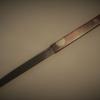





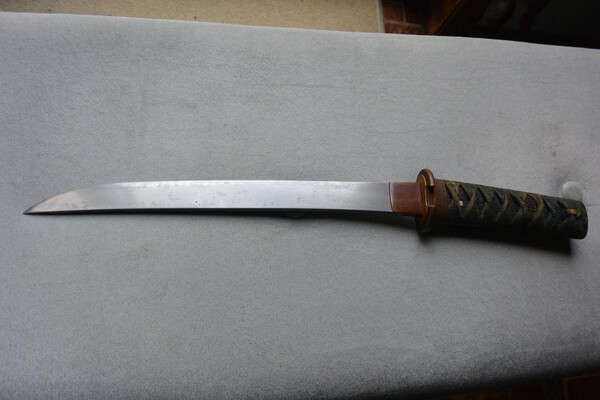
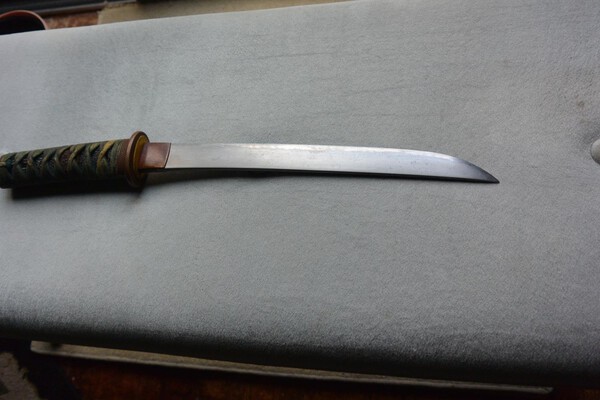
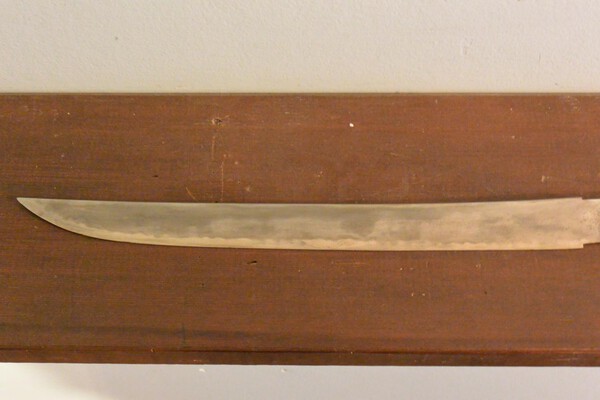
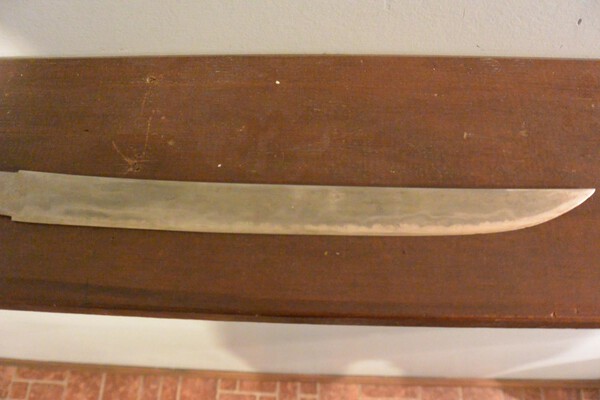
Wakizashi double sided Mei translation help needed
in Translation Assistance
Posted
other side.